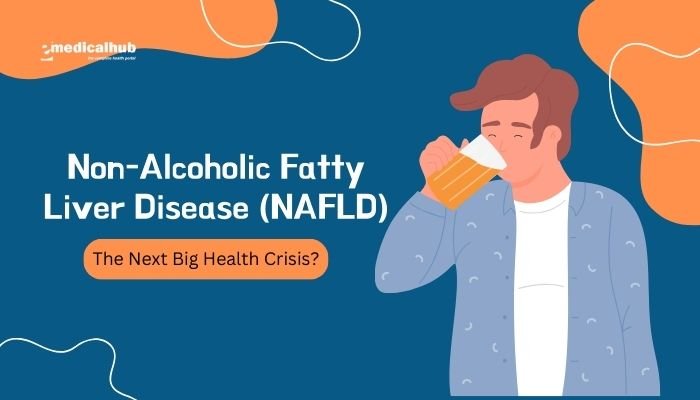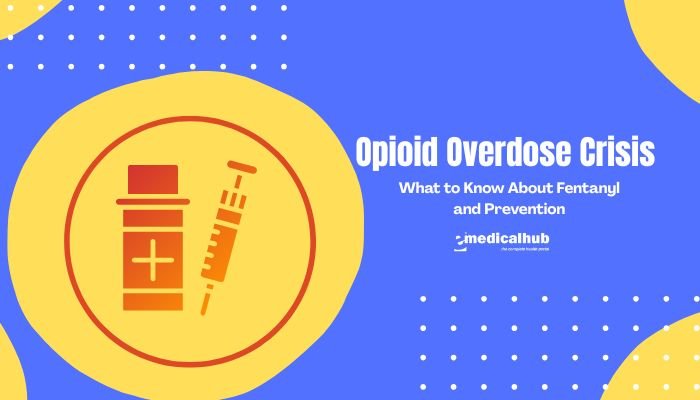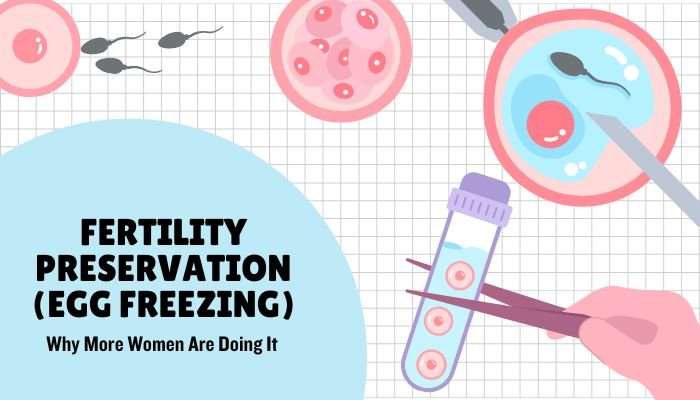Introduction
Non-alcoholic fatty liver disease (NAFLD) is rapidly becoming a leading chronic liver condition worldwide, correlating with rising trends in obesity, type 2 diabetes, and other components of metabolic syndrome.
Once overshadowed by more recognized causes of liver damage (like alcohol abuse or viral hepatitis), NAFLD is increasingly spotlighted as a silent, widespread ailment that can quietly progress into more severe forms of liver injury. For many, a diagnosis of NAFLD comes as a surprise—often discovered incidentally through routine blood tests or imaging.
What distinguishes NAFLD from other liver diseases is its primary association with metabolic health rather than alcohol consumption. While excessive drinking remains a major driver of liver pathology, NAFLD points to a broader public health challenge linked to diet, physical inactivity, and lifestyle patterns in modern societies.
Without effective intervention, NAFLD can evolve into non-alcoholic steatohepatitis (NASH), liver cirrhosis, and even hepatocellular carcinoma (HCC). Hence, the question arises: is NAFLD poised to become the next big health crisis?
This article explores the complexities of NAFLD, covering its definition, prevalence, drivers, clinical progression, diagnosis, treatment, and preventive strategies. We will look at how the condition threatens population well-being, burdens healthcare systems, and the steps individuals and communities can take to avert NAFLD’s most severe outcomes.
By understanding this disease and addressing its modifiable risk factors, we can better manage what could be one of the 21st century’s most pressing metabolic and hepatic challenges.
Understanding NAFLD: Definitions and Spectrum
Terminology and Key Concepts
- NAFLD: Encompasses a range of liver pathologies where fat accumulates in hepatic cells (≥5% steatosis) in the absence of significant alcohol intake or other specific causes (e.g., viral hepatitis).
- NASH (Non-Alcoholic Steatohepatitis): A more advanced subtype characterized by hepatic inflammation, cellular damage, and ballooning in addition to fat accumulation. It can potentially lead to fibrosis.
- Cirrhosis: The end-stage fibrotic remodeling of the liver, impairing normal architecture and function, significantly raising the risk of liver failure and hepatocellular carcinoma.
Distinguishing Non-Alcoholic From Alcoholic Causes
A threshold for “non-alcoholic” typically stands around 21 standard drinks per week for men and 14 for women (though national guidelines differ). If consumption is below these thresholds, a fatty liver condition is classed as “non-alcoholic.” However, borderline or occasional alcohol use plus metabolic factors might blur the lines clinically.
Why NAFLD Matters
NAFLD is not merely benign “fatty liver.” It can remain stable in some, but in many, it quietly progresses or fosters other comorbidities like cardiovascular disease. Understanding its pathophysiology and where it fits within broader metabolic dysfunction is crucial to preventing severe end-organ damage.
Epidemiology, Prevalence, and Risk Factors
Global Prevalence
- Rising Incidence: NAFLD prevalence is estimated at 25–30% globally, but it can exceed 50% in certain populations with obesity or type 2 diabetes.
- Geographic Variation: High-income countries show significant rates tied to western dietary habits, but NAFLD is also climbing in developing economies adopting similar lifestyles.
Sociodemographic Trends
- Age and Gender: Historically more common in middle-aged adults, but childhood obesity has led to an uptick in pediatric NAFLD diagnoses. Some studies find a male predominance, though data differ regionally.
- Ethnicity: Certain ethnic groups (e.g., Hispanics in the Americas) show elevated susceptibility due to genetic polymorphisms (e.g., PNPLA3 gene variants).
Major Risk Factors
- Obesity: Particularly central (visceral) adiposity is a prime driver.
- Insulin Resistance: Found in type 2 diabetes and prediabetes, leads to abnormal hepatic fat metabolism.
- Dyslipidemia: Elevated triglycerides, low HDL.
- Hypertension: Commonly coexists in metabolic syndrome.
- Sedentary Lifestyle: Minimal physical activity encourages fat accumulation in the liver.
Implication: NAFLD aligns strongly with metabolic syndrome. As obesity spreads, so does NAFLD incidence, with profound implications for global healthcare spending and individual well-being.
Pathophysiology and Progression from NAFLD to NASH
“Two-Hit” Hypothesis and Beyond
- First Hit: Excess lipids accumulate in liver cells (steatosis). This alone can remain stable or mild, with minimal inflammation.
- Second Hit: Oxidative stress, inflammatory cytokines, or gut dysbiosis triggers further hepatic injury—leading to ballooning, necrosis, and eventually fibrosis.
- Multifactorial Model: Modern research sees it as multi-hit, with parallel influences (lipotoxicity, endoplasmic reticulum stress, microbiome alterations) fueling progression.
Inflammation, Fibrosis, and Liver Damage
- Insulin Resistance: Drives free fatty acid flux into hepatocytes, stimulating hepatic insulin signaling confusion and upregulated lipogenesis.
- Oxidative Stress: Reactive oxygen species (ROS) damage cell membranes, proteins, and DNA, prompting immune cell infiltration.
- Fibrogenesis: Activated stellate cells deposit collagen in the extracellular matrix, culminating in scarring. Over time, repeated injury can cause bridging fibrosis to full-blown cirrhosis.
Role of the Gut-Liver Axis
- Gut Microbiota: Dysbiosis can produce pro-inflammatory signals or toxins traveling to the liver via the portal vein.
- Intestinal Permeability: “Leaky gut” can heighten translocation of bacterial endotoxins, aggravating hepatic inflammation.
Clinical Manifestations and Comorbidities
Often Asymptomatic Early On
- Silent Liver Disease: Many discover NAFLD incidentally via elevated liver enzymes (ALT, AST) or imaging that reveals steatosis.
- Non-Specific Symptoms: Fatigue, mild right-upper-quadrant discomfort, or general malaise.
Comorbid Conditions
- Type 2 Diabetes: The synergy between NAFLD and insulin resistance is potent—each can worsen the other.
- Cardiovascular Disease: NAFLD intensifies atherosclerosis risk; CVD is a leading cause of mortality among NAFLD patients.
- Chronic Kidney Disease: Some data links advanced NAFLD with renal dysfunction.
- Polycystic Ovary Syndrome (PCOS): Commonly co-occurs in women, likely tied to shared metabolic underpinnings.
Advanced Stages
- NASH: May present with persistent malaise, more severe liver enzyme elevations.
- Cirrhosis: End-stage scarring can lead to portal hypertension, variceal bleeding, ascites, hepatic encephalopathy.
- Hepatocellular Carcinoma (HCC): NAFLD is poised to become a leading cause of HCC, surpassing viral hepatitis in some regions.
Diagnosis of NAFLD
Clinical Evaluation
- History and Physical Exam: Overweight or obese individuals with metabolic syndrome raise suspicion. Evaluate alcohol intake carefully.
- Laboratory Tests: Mild to moderate elevation in ALT and AST, with ALT often higher. Ruling out hepatitis B, C is essential.
- Non-Invasive Markers: Indices like FIB-4, NAFLD fibrosis score, or transient elastography help gauge fibrosis risk.
Imaging Techniques
- Ultrasound: Common initial screening, detects increased echogenicity.
- MRI Proton Density Fat Fraction: More quantitative but costlier, used in advanced centers.
- FibroScan (Transient Elastography): Measures hepatic stiffness to evaluate fibrosis.
Liver Biopsy
- Diagnostic “Gold Standard”: Distinguishes simple steatosis from NASH, grading inflammation, and staging fibrosis.
- Limitations: Invasive, sampling error, and cost. Typically reserved for uncertain cases or suspicion of advanced disease.
Management: Lifestyle and Pharmacological Options
Lifestyle Modifications
- Weight Loss: Modest (7–10% of body weight) can significantly reduce hepatic fat and inflammation.
- Diet: Balanced, nutrient-rich patterns like the Mediterranean diet—emphasizing fruits, vegetables, whole grains, lean proteins, and healthy fats. Minimizing sugary beverages, processed foods.
- Physical Activity: Aerobic exercise plus resistance training to improve insulin sensitivity and reduce hepatic fat. Even 30 minutes most days helps.
- Behavioral Support: Multi-component interventions (dietician guidance, counseling) yield better long-term adherence.
Pharmacotherapy
- No Approved “Miracle Drug”: While many trial candidates exist, none are definitively standard for NAFLD except treating comorbidities like type 2 diabetes.
- Metformin: Helps manage insulin resistance, but data on direct NAFLD improvement is mixed.
- Pioglitazone: Shown some benefit in NASH patients, but safety concerns (weight gain, edema) exist.
- GLP-1 Receptor Agonists: Liraglutide or semaglutide may reduce fat and inflammation in the liver.
- Vitamin E: Some improvement in nondiabetic NASH patients, but caution about high-dose toxicity.
Bariatric Surgery
- Indication: For morbidly obese individuals. Substantial weight loss can drastically cut liver fat, sometimes reversing advanced fibrosis.
- Follow-up: Lifelong monitoring for nutrient deficiencies, ensuring the procedure is part of a comprehensive approach.
Preventing NAFLD at Population Level
Public Health Measures
- Obesity Prevention: Early interventions in schools for healthy diets, physical education, tackling sugar-laden drinks.
- Food Policy: Taxation or regulation of high-sugar or ultra-processed foods, improved labeling.
- Community Design: Encouraging walkable cities, safe recreational facilities to foster an active lifestyle.
Screening and Awareness
- High-Risk Groups: People with metabolic syndrome, T2DM, or obesity. Routine ALT checks or ultrasound screening can catch NAFLD early.
- Education: Informing patients about the link between sugary diets, minimal exercise, and potential liver disease.
Healthcare System Support
- Multi-Disciplinary Clinics: Integration of endocrinologists, hepatologists, nutritionists, psychologists, exercise physiologists.
- Clinical Guidelines: Ensuring doctors stay updated on evolving evidence, screening protocols, and the synergy with cardiovascular risk management.
Future Therapies and Research Directions
Novel Targets
- FXR Agonists: Farnesoid X receptor modulators (e.g., obeticholic acid) have shown promise in advanced NASH, though concerns about adverse events remain.
- PPAR Agonists: Agents modulating lipid and glucose metabolism (e.g., elafibranor).
- Anti-Fibrotic Agents: Drugs directly inhibiting stellate cell activation or TGF-β pathways under investigation.
Personalized Medicine and Biomarkers
- Genetic Markers: PNPLA3 or TM6SF2 variants strongly predispose some individuals to NAFLD or NASH progression.
- Microbiome Approaches: Probiotics, prebiotics, or fecal transplants to modulate gut-liver axis.
- Imaging Innovations: Non-invasive fibro-elastography enhancements or AI-driven quantification of fat content.
Advocacy and Funding
- Clinical Trial Expansion: Large multi-center trials needed to confirm or refine new drug interventions.
- Patient Involvement: Engagement in design and reporting helps ensure real-world feasibility.
- Government and Pharma Partnerships: Spur investment to find definitive solutions or combos bridging the gap in advanced NASH therapy.
Living Well with NAFLD: Patient Stories and Insights
Lifestyle Success Cases
- Weight Reduction: Many patients experience improved liver enzyme levels and imaging findings after shedding 10% or more body weight.
- Exercise Joy: Some discovered daily walks, mild cycling, or swimming that helped them manage daily stress and insulin sensitivity.
- Cooking at Home: Minimizing processed foods fosters nutrient-rich diets—crucial to slow or reverse steatosis.
Coping with Comorbidities
- Diabetes Management: Controlling blood glucose strongly correlates with stabilizing or reversing NAFLD.
- Blood Pressure Control: Hypertension complicates the metabolic burden. A balanced approach to nutrition and medication helps.
- Mental Health: Stress and emotional eating can perpetuate weight issues. Engaging therapy, mindfulness, or support groups yields progress.
Encouragement and Realistic Goals
- Minor Steps: Even a 5% weight reduction can be beneficial. Gradual changes in diet and activity are more sustainable than crash regimens.
- Patience: Reversal or improvement of liver changes might take months or years, but consistent effort does pay off.
Conclusion
Non-alcoholic fatty liver disease (NAFLD) is indeed on course to become a major global health crisis unless tackled head-on. As Westernized diets and sedentary lifestyles proliferate, so does the prevalence of metabolic syndrome—and in turn, NAFLD. While many remain asymptomatic, the risk of progression to non-alcoholic steatohepatitis, cirrhosis, or even liver cancer is real. For healthcare systems already burdened by obesity and type 2 diabetes, the potential wave of advanced liver disease is alarming.
However, the outlook is not hopeless. Early detection, lifestyle modifications, and robust public health interventions can significantly alter this disease’s trajectory. Ongoing research into pharmacological agents, combined with proven strategies such as weight management, balanced diets, and physical activity, offers a multifaceted approach to controlling NAFLD. Meanwhile, macro-level solutions—improved food policies, city planning for active living, consistent screening in at-risk groups—can reduce the tide of new cases.
As individuals, we can embrace incremental changes in our daily routines; as communities, we can press for the socio-environmental support needed to sustain these habits. Together, these steps can ensure NAFLD does not become the next unstoppable liver pandemic, but rather a disease that recedes when confronted with mindful nutrition, modern medicine, and proactive policy.
Frequently Asked Questions (FAQ)
- Can NAFLD occur in someone who isn’t overweight?
- Yes, though less common, “lean NAFLD” can occur, often linked to genetic predispositions or certain metabolic factors.
- Is NAFLD painful?
- Usually mild or no pain. Some may experience discomfort or fullness in the right upper abdomen, but many are asymptomatic.
- Does cutting sugar alone improve NAFLD?
- Reducing added sugars (especially fructose) is a big help. Overall lifestyle changes—balanced diet, moderate exercise—provide maximum benefit.
- How often should someone with early NAFLD get liver function tests?
- Typically every 6–12 months, or as recommended, to monitor progression or improvement.
- Is coffee beneficial for NAFLD?
- Studies suggest moderate coffee intake might lower the risk of advanced fibrosis, but it’s an adjunct measure, not a primary treatment.
- Does taking ‘liver detox’ supplements help?
- Many “detox” products lack robust scientific backing. Focus on proven lifestyle interventions and discuss any supplementation with a qualified physician.
- Can kids have NAFLD, and how do we manage it?
- Yes, pediatric NAFLD is rising with childhood obesity. Management is similar: improved diet, physical activity, and addressing comorbid conditions.
References
- Younossi Z, et al. Global epidemiology of NAFLD—Meta-analytic assessment of prevalence, incidence, and outcomes. Hepatology. 2016;64(1):73-84.
- Chalasani N, Younossi Z, Lavine JE, et al. The diagnosis and management of non-alcoholic fatty liver disease. Hepatology. 2018;67(1):328-357.
- Eslam M, Alvani R, Shiha G. Obeticholic acid: towards first approval for NASH. Lancet. 2020;395(10223):1295-1297.
- Vos MB, et al. NASPGHAN clinical practice guidelines: NAFLD in children. J Pediatr Gastroenterol Nutr. 2017;64(2):319-334.
- Anstee QM, et al. From NASH to HCC: current concepts and future challenges. Nat Rev Gastroenterol Hepatol. 2019;16(6):341-356.
- Tilg H, Targher G, Byrne CD. Non-alcoholic fatty liver disease: an update. Gastroenterology. 2021;160(6):1830-1845.
- Yki-Järvinen H. Non-alcoholic fatty liver disease as a manifestation of the metabolic syndrome. Lancet Diabetes Endocrinol. 2014;2(11):901-910.
- Wong VW, et al. Lean NAFLD: a distinct entity or part of the NAFLD spectrum? J Hepatol. 2020;72(4):785-797.
- Lazarus JV, Mark HE, Anstee QM. The global NAFLD epidemic: forging a consensus and approach. Nat Rev Gastroenterol Hepatol. 2020;17(2):67-68.
- Sumida Y, Yoneda M. Current and future pharmacological therapies for NAFLD/NASH. J Gastroenterol. 2018;53(3):362-376.
- Armstrong MJ, et al. GLP-1 receptor agonists for managing NAFLD. Lancet Gastroenterol Hepatol. 2019;4(3):208-216.
- Kawaguchi-Suzuki M, Bril F, et al. Role of vitamins in the management of NAFLD. Curr Opin Clin Nutr Metab Care. 2016;19(4):285-290.
- Romero-Gomez M, et al. Management of NAFLD in real-world practice. Liver Int. 2021;41(3):379-389.
- European Association for the Study of the Liver (EASL). EASL–EASD–EASO clinical practice guidelines for the management of non-alcoholic fatty liver disease. J Hepatol. 2016;64(6):1388-1402.






